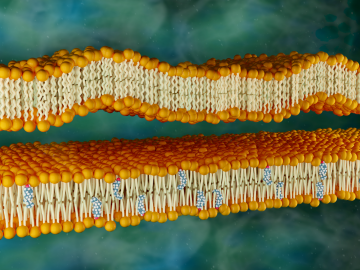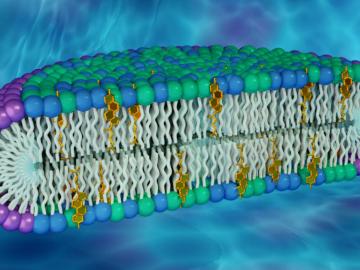
Filter News
Area of Research
- Advanced Manufacturing (4)
- Biology and Environment (9)
- Computational Biology (1)
- Energy Science (21)
- Fusion and Fission (16)
- Fusion Energy (11)
- Isotopes (20)
- Materials (54)
- Materials for Computing (6)
- National Security (15)
- Neutron Science (78)
- Nuclear Science and Technology (15)
- Quantum information Science (3)
- Supercomputing (21)
News Type
News Topics
- (-) Cybersecurity (17)
- (-) Fusion (47)
- (-) Isotopes (38)
- (-) Microscopy (34)
- (-) Neutron Science (109)
- (-) Physics (38)
- (-) Polymers (18)
- (-) Security (17)
- (-) Space Exploration (23)
- 3-D Printing/Advanced Manufacturing (89)
- Advanced Reactors (25)
- Artificial Intelligence (92)
- Big Data (62)
- Bioenergy (84)
- Biology (100)
- Biomedical (53)
- Biotechnology (28)
- Buildings (50)
- Chemical Sciences (48)
- Clean Water (30)
- Composites (21)
- Computer Science (153)
- Coronavirus (30)
- Critical Materials (17)
- Education (2)
- Emergency (4)
- Energy Storage (64)
- Environment (164)
- Exascale Computing (52)
- Fossil Energy (7)
- Frontier (45)
- Grid (54)
- High-Performance Computing (93)
- Hydropower (12)
- Irradiation (2)
- ITER (7)
- Machine Learning (51)
- Materials (87)
- Materials Science (89)
- Mathematics (11)
- Mercury (10)
- Microelectronics (3)
- Molten Salt (7)
- Nanotechnology (29)
- National Security (63)
- Nuclear Energy (85)
- Partnerships (37)
- Quantum Computing (39)
- Quantum Science (59)
- Simulation (51)
- Software (1)
- Statistics (3)
- Summit (48)
- Transportation (66)
Media Contacts


Rufus Ritchie came from Kentucky coal country, a region not known for producing physicists.

Neutron scattering at ORNL has shown that cholesterol stiffens simple lipid membranes, a finding that may help us better understand the functioning of human cells.

A team of researchers led by Vanderbilt University has recently shed light on how membrane proteins could be influenced by the lipids around them. By developing a novel type of membrane model, the scientists were able to show that the shape and behavior of a protein can be altered by exposure to different lipid compositions.

Scientists at ORNL and the University of Nebraska have developed an easier way to generate electrons for nanoscale imaging and sensing, providing a useful new tool for material science, bioimaging and fundamental quantum research.

Radioactive isotopes power some of NASA’s best-known spacecraft. But predicting how radiation emitted from these isotopes might affect nearby materials is tricky

The Department of Energy announced awards for 10 projects with private industry that will allow for collaboration with DOE national laboratories in accelerating fusion energy development.

Oak Ridge National Laboratory scientists have discovered a cost-effective way to significantly improve the mechanical performance of common polymer nanocomposite materials.

The inside of future nuclear fusion energy reactors will be among the harshest environments ever produced on Earth. What’s strong enough to protect the inside of a fusion reactor from plasma-produced heat fluxes akin to space shuttles reentering Earth’s atmosphere?


